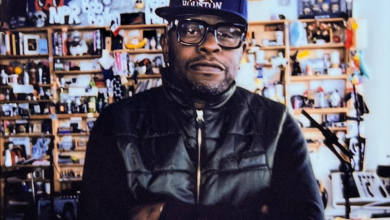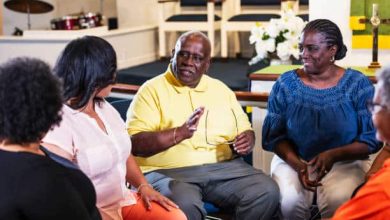No Trick-or-Treating? 7 Inclusive Halloween Ideas
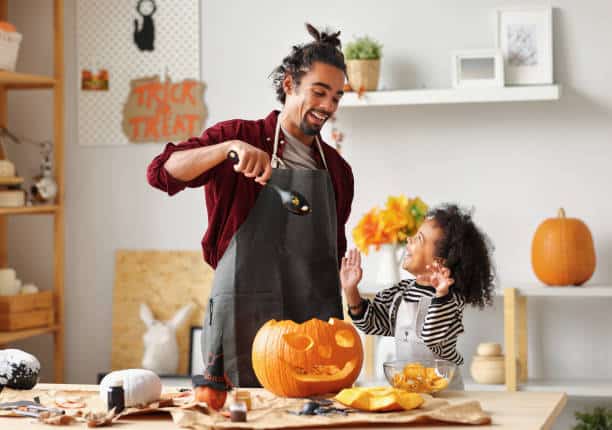

Halloween doesn’t have to mean going door-to-door, collecting candy you can’t eat, or putting up with loud crowds and costumes that make you itch.
Whether you’re skipping trick-or-treating this year because of food allergies, sensory needs, mobility concerns, cultural preferences, or just because it’s not your vibe, you’re not missing out. You’re making it your own.
Here are seven fun, inclusive, and low-stress Halloween ideas that work for all kinds of bodies, families, and comfort levels — no pressure, no sugar crash, no spooky chaos required.
RELATED: 5 Sugar-Free Treats Kids Will LOVE this Halloween
Host a “Costume & Cocoa” Night In
Who says you have to go outside to have Halloween fun?
Set up a cozy night indoors where everyone can dress up (or not!), sip on warm cocoa, and play low-key games like charades, storytelling, or card games.
Make it extra special:
- Let everyone wear pajamas or soft costumes
- Offer dairy-free, sugar-free, or vegan cocoa options
- Set up a “cocoa toppings bar” with cinnamon, whipped cream, marshmallows, or sprinkles
- Have a mini costume parade and take fun selfies!
This is perfect for folks who get overstimulated, want to stay warm, or just prefer a chill Halloween vibe.
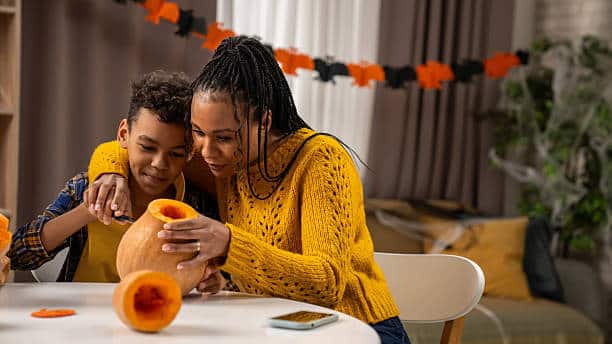
Create a DIY Treat Table With Safe Snacks + Crafts
If allergies or dietary needs make candy complicated, no problem — build a table of safe, labeled snacks and fun Halloween crafts instead.
Try:
- Fruit cups with googly eyes
- Pretzel stick “witch wands”
- Popcorn in paper cones
- Sticker-making, slime jars, or pumpkin painting stations
Make it allergy-friendly by clearly labeling what contains nuts, gluten, or dairy. And make it sensory-friendly by offering a quiet space nearby for folks who need breaks.
Tip: Use color-coded bowls or labels so everyone can grab what’s safe for them.

Throw a Themed Movie Marathon
Pick a few Halloween(ish) movies based on your audience — from cute to creepy, there’s something for everyone.
Kid-friendly ideas:
- It’s the Great Pumpkin, Charlie Brown
- The Addams Family
- Hotel Transylvania
- Coco (especially meaningful for families celebrating Día de los Muertos, too!)
For teens/adults:
- Hocus Pocus
- Coraline
- Beetlejuice
- Get Out (for a more culturally resonant thriller night)
Set up a “theater” space with pillows, blankets, and safe snacks. Offer noise-canceling headphones or closed captions for accessibility.
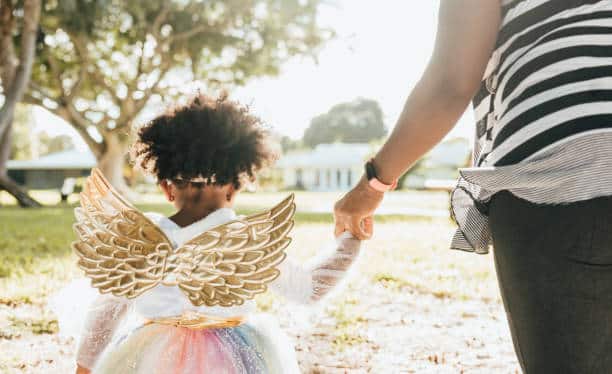
Organize a Neighborhood Glow Walk (No Candy Needed)
Instead of traditional trick-or-treating, plan a Glow Walk through your block or neighborhood — or even your backyard if space is limited.
Invite friends, neighbors, or community members to:
- Decorate their yards or windows with glow sticks or soft lights
- Wear glow-in-the-dark accessories or light-up shoes
- Hand out small items like stickers, temporary tattoos, bubbles, or bookmarks
- Keep it candy-optional — the glow is the show!
This is especially great for kids with feeding tubes, sugar restrictions, or families who want to avoid food altogether.
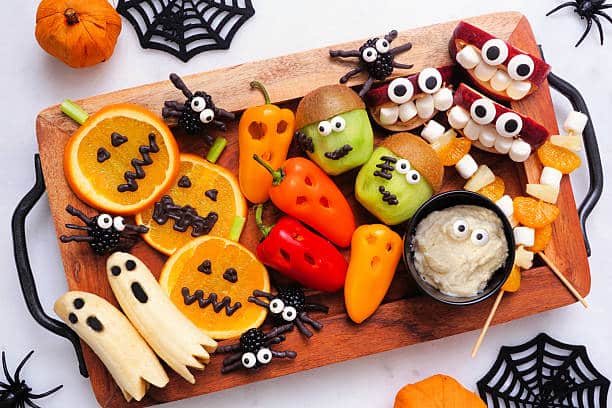
Try Sweet Swaps That Skip the Sugar Crash
If you still want a treat table, make it work for all kinds of bodies and needs.
Try:
- Yogurt parfait stations with fruit and toppings
- Apple slice “donuts” with sunflower butter and sprinkles
- Oatmeal cookies with allergy-friendly ingredients
- Teal Pumpkin treats (non-food items like fidget toys, crayons, or small puzzles)
Let kids (and grownups!) “shop” the table like a store, and give them little bags to take home their faves.
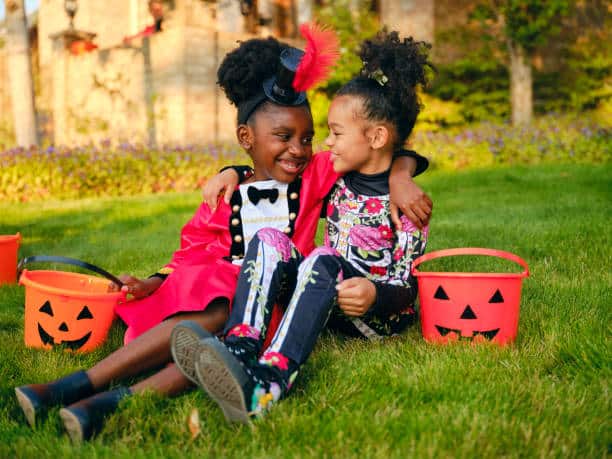
Offer Sensory-Friendly Fun for Kids & Adults
For folks with sensory sensitivities, Halloween can be too much. Loud sounds, itchy costumes, bright lights — it can all add up fast.
You can help by creating a sensory-friendly zone:
- Keep the lights low or use warm-colored string lights
- Skip the sound effects and sudden scares
- Offer soft seating, noise-canceling headphones, or a calm corner with weighted blankets or fidget toys
- Encourage soft costumes (like onesies or cotton-based outfits), or no costumes at all — comfort first
Remember: not everyone needs to dress up or participate the same way to belong.
RELATED: Halloween Can Be Scary for People With Dementia. Here’s How to Help
Celebrate Community Over Candy
Halloween doesn’t have to be about sugar — it can be about connection. Shift the focus from sweets to service, memory, or cultural traditions.
Try:
- Hosting a costume swap to keep it budget-friendly
- Collecting donations (toiletries, canned food, school supplies) as part of the event
- Setting up a “kindness station” where kids write thank-you notes or decorate cards for local elders or hospital patients
- Making room for cultural traditions like Día de los Muertos, African harvest festivals, or faith-based autumn holidays
This is especially meaningful for families who want Halloween to feel more grounded, values-based, or aligned with spiritual or cultural practices.
Bonus: Start a New Tradition That’s All Yours
Who says Halloween has to look a certain way?
Maybe your new tradition becomes:
- Midnight pancakes in costume
- A “kindness walk” instead of trick-or-treating
- Backyard bonfire storytelling (real or battery-operated lights!)
- Book-themed costumes and reading nights
- Matching cozy pajamas and scary podcast nights for the grown folks
If trick-or-treating doesn’t work for you, don’t feel left out — build something beautiful instead—your family, your rules, your joy.
Final Thought: Inclusion Is the Treat
At its core, Halloween is about joy, imagination, and connection. It’s a chance to play, to pretend, to laugh, to come together — and everyone deserves to feel like they belong in that celebration. No matter their abilities, allergies, culture, comfort level, or how they move through the world.
That’s what inclusion really is: making space for everyone’s needs, not just some. It’s saying, “You’re welcome here, exactly as you are.”
Whether that means skipping trick-or-treating and building your own safe and fun tradition at home, wearing cozy pajamas instead of itchy costumes, or trading candy for crafts, you’re not missing out — you’re choosing joy on your terms. And that’s powerful.
Especially in communities that have long been left out or overlooked — Black and Brown families, disabled folks, neurodivergent kids and adults, queer families, low-income households — creating inclusive holidays is about more than fun. It’s about healing. It’s about representation. It’s about saying: we matter too.
Let’s raise kids who grow up knowing they don’t have to fit into uncomfortable boxes to be worthy of celebration. Let’s make room for elders, for caregivers, for folks with chronic illness or sensory needs who don’t always get invited in. Let’s remember that the point of Halloween isn’t how much candy you collect — it’s how much care we show each other.
When we lead with love, intention, and flexibility, we create new traditions that feel good for everybody — not just the loudest or the most visible. And that? That’s the real treat.
So whatever your Halloween looks like this year — big or small, spooky or soft — just know:
- You’re doing it right.
- Your joy matters.
- And your version of Halloween is worth celebrating.


